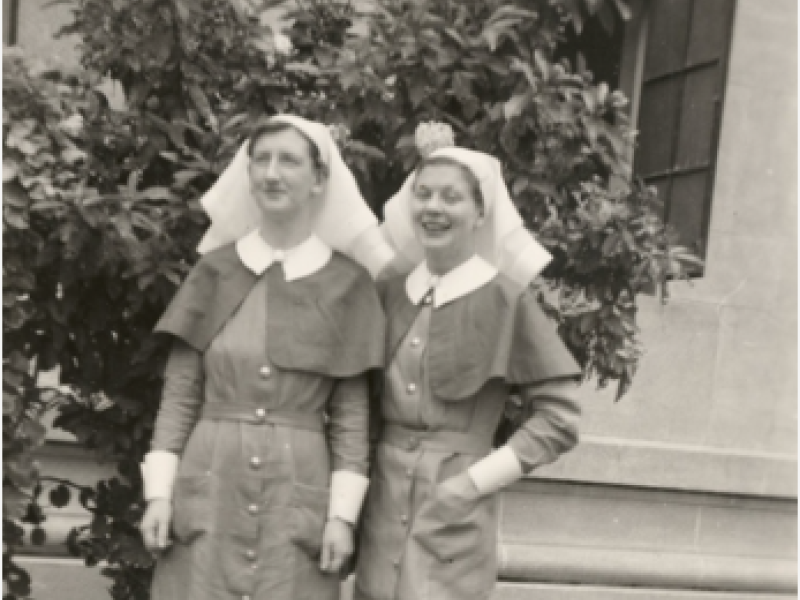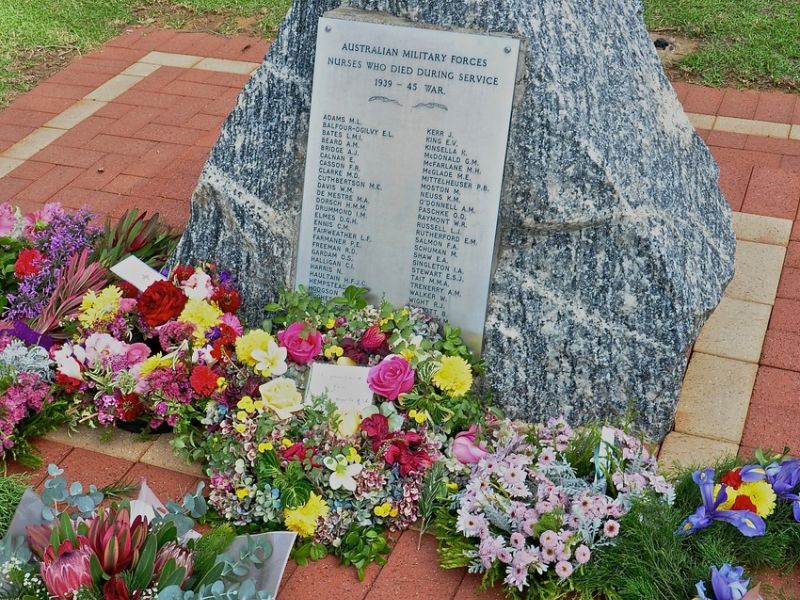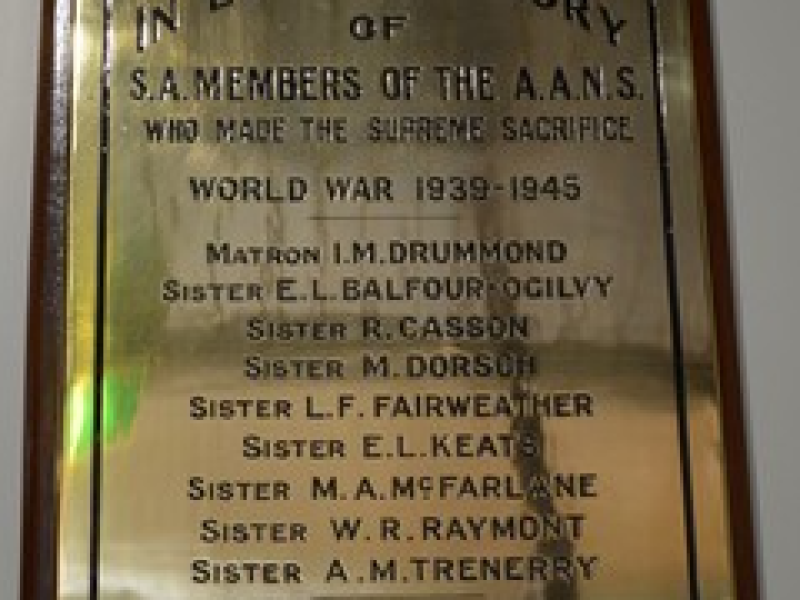Sister Lorna Florence Fairweather, 13th Australian General Hospital, Australian Army Nursing Service
Lorna Fairweather was born on 31 January 1913 at Stirling West, South Australia, to Percival and Florence Johnson of Broadview.
She grew up in the suburbs of Adelaide and began her nursing career at Mareeba Babies’ Hospital in Woodville. Here she excelled, scoring the highest marks in theory and practice, before leaving to complete her training at the Royal Adelaide Hospital.
Fairweather had served on the staff at the Crippled Children’s Home and risen to the rank of relieving matron at the Royal Adelaide Hospital by the time she enlisted in the Australian Imperial Force on 11 October 1940, joining the Australian Army Nursing Service. She was one of the most highly qualified nurses in the service, and was called up in July 1941 to commence duty with the 13th Australian General Hospital at Woodside in South Australia.
In August, Fairweather left Melbourne on board the hospital ship Wanganella and worked on the Malay Peninsula, alternating between the 10th and 13th Australian General Hospitals. She was in Singapore with the 13th Australian General Hospital when the Japanese attacked Pearl Harbor in December 1941.
When the fall of Singapore became inevitable, most Australian personnel were evacuated from the island. Official evacuations from Singapore had begun in late January but continued until the last moment.
The nurses of the 13th Australian General Hospital remained until 12 February, after Japanese soldiers had landed on the north-west of Singapore Island, and just days before the city fell to the Imperial Japanese Army.
Fairweather was among the 65 Australian nurses who left Singapore aboard the Vyner Brooke. Two days after their departure the ship was bombed by Japanese aircraft and many lives were lost as it sank. Those who could swim made for the nearby Banka Island.
Some of the survivors travelled to the nearest port to formally surrender but Fairweather was among the 22 Australian nurses who remained on the beach to tend the wounded, setting up a shelter with a large Red Cross sign on it.
On the morning of 16 February, a group of Japanese soldiers arrived, and ordered the wounded men capable of walking around a headland, where they were killed.
A Japanese officer then ordered the remaining 22 nurses to walk into the sea. When the water reached their waists the Japanese opened fire with machine-guns. All but one of the women were killed, including Lorna Fairweather. She was 33 years old.
Fairweather is commemorated on the Singapore Memorial, and on a plaque dedicated in 1947 in the nurses’ chapel of the Royal Adelaide Hospital. Its inscription reads:
“In loving memory of South Australian members of the Australian Army Nursing Service who made the supreme sacrifice (killed by Japanese), World War 1939–1945.”
Christina Zissis, Editor, Military History Section
Image: Informal portrait of SFX13419 Sister (Sr) Annie Merle Trenerry and SFX13431 Sr Lorna Florence Fairweather, both of the 2/13th Australian General Hospital, 1941

 Australian War Memorial
Australian War Memorial
